Archives
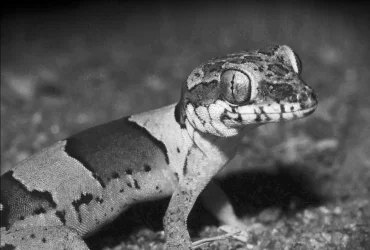 v14i1.347
v14i1.347eISSN: 1800-427X (online)
DOI:10.47605/tapro.v14i1.347
Submitted date: 28 November 2024
Accepted date: 16 January 2025
Published date: 28 January 2025
Pp. 1–15, pls. 1–2.
A NEW SPECIES OF KARST-ASSOCIATED PITVIPER OF THE Trimeresurus kanburiensis COMPLEX (SQUAMATA: VIPERIDAE) FROM EASTERN THAILAND
Parinya Pawangkhanant, Sabira S. Idiiatullina, Ton Smits, Ian Dugdale, Andrew Pierce, Chatmongkon Suwannapoom & Nikolay A. Poyarkov*
*Corresponding author. E-mail: n.poyarkov@gmail.com
Abstract
We describe a new species of karst-dwelling pitviper from Sa Kaeo Province in eastern Thailand based on morphological and molecular (2,296 bp from cyt b, ND4, and 16S rRNA mitochondrial DNA genes) lines of evidence. Our phylogenetic analysis places the new species as a sister lineage of Trimeresurus venustus (p = 2.7% and 3.7% for cyt b and ND4 genes, respectively). It is also closely related to T. cardamomensis (p = 2.1% and 2.6% for cyt b and ND4 genes, respectively). To date, the new species is known from only two adult specimens, and its distribution seems to be restricted to a narrow limestone karst area in the province of Sa Kaeo in Thailand near the national border with Cambodia. Additional studies are required to understand its life history, distribution, and conservation status. The discovery of this new species brings the total number of known Trimeresurus to 51 species, 19 of which occur in Thailand, including five that are endemic to this country.
Key words : limestone, morphology, molecular phylogeny, systematics, Sa Kaeo Province
Section Editor: Patrick David
LSID:urn:lsid:zoobank.org
DOI:10.47605/tapro.v14i1.347
Submitted date: 28 November 2024
Accepted date: 16 January 2025
Published date: 28 January 2025
Pp. 1–15, pls. 1–2.
A NEW SPECIES OF KARST-ASSOCIATED PITVIPER OF THE Trimeresurus kanburiensis COMPLEX (SQUAMATA: VIPERIDAE) FROM EASTERN THAILAND
Parinya Pawangkhanant, Sabira S. Idiiatullina, Ton Smits, Ian Dugdale, Andrew Pierce, Chatmongkon Suwannapoom & Nikolay A. Poyarkov*
*Corresponding author. E-mail: n.poyarkov@gmail.com
Abstract
We describe a new species of karst-dwelling pitviper from Sa Kaeo Province in eastern Thailand based on morphological and molecular (2,296 bp from cyt b, ND4, and 16S rRNA mitochondrial DNA genes) lines of evidence. Our phylogenetic analysis places the new species as a sister lineage of Trimeresurus venustus (p = 2.7% and 3.7% for cyt b and ND4 genes, respectively). It is also closely related to T. cardamomensis (p = 2.1% and 2.6% for cyt b and ND4 genes, respectively). To date, the new species is known from only two adult specimens, and its distribution seems to be restricted to a narrow limestone karst area in the province of Sa Kaeo in Thailand near the national border with Cambodia. Additional studies are required to understand its life history, distribution, and conservation status. The discovery of this new species brings the total number of known Trimeresurus to 51 species, 19 of which occur in Thailand, including five that are endemic to this country.
Key words : limestone, morphology, molecular phylogeny, systematics, Sa Kaeo Province
Section Editor: Patrick David
LSID:urn:lsid:zoobank.org
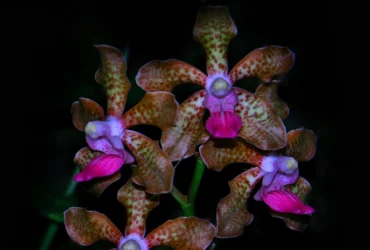 v13i2.346
v13i2.346ISSN: 1800-427X (printed)
eISSN: 1800-427X (online)
DOI:10.47605/tapro.v13i2.346
Submitted date: 4 June 2024
Accepted date: 28 October 2024
Published date: 19 December 2024
Pp. 148–149, pl. 33.
On the occurrence of Ipomoea imperati (Convolvulaceae) on mainland India
A. Balkrishna, B. Joshi*, A. Srivastava, V.P. Arya, R.K. Mishra, A. Kumar, A. Kushwaha & R. Kumar
*Corresponding author. E-mail: bhaskar.joshi@patanjali.res.in
Surveys and exploration of the Ganga River catchment areas were undertaken from Gomukh (Uttarakhand) to Gangasagar (West Bengal) under the National Mission for Clean Ganga project of the Ministry of Jal Shakti (Department of Water Resources, River Development and Ganga Rejuvenation), New Delhi. Surveys were conducted in the pre-monsoon and post-monsoon seasons in 2023. During the floristic survey in October 2023, unknown specimens of the Convolvulaceae family were collected from Uttar Pradesh: Varanasi Ghat (Varanasi District) and Dafi (Balia District) and Bihar State: Doriganj (Saran District) and Barh (Patna District), India. Further study of the vegetative and flowering parts of the specimens, and scrutiny of the literature revealed that they were specimens of Ipomoea imperati (Vahl). This is a littoral pantropic species previously reported from Andaman & Nicobar Islands. The herbarium specimens were deposited in the Patanjali Research Foundation (PRFH), Haridwar, Uttarakhand, India. Brief descriptions of its taxonomy, phenology, distribution, and habitat are provided.
Section Editor: Arunrat Chaveerach
eISSN: 1800-427X (online)
DOI:10.47605/tapro.v13i2.346
Submitted date: 4 June 2024
Accepted date: 28 October 2024
Published date: 19 December 2024
Pp. 148–149, pl. 33.
On the occurrence of Ipomoea imperati (Convolvulaceae) on mainland India
A. Balkrishna, B. Joshi*, A. Srivastava, V.P. Arya, R.K. Mishra, A. Kumar, A. Kushwaha & R. Kumar
*Corresponding author. E-mail: bhaskar.joshi@patanjali.res.in
Surveys and exploration of the Ganga River catchment areas were undertaken from Gomukh (Uttarakhand) to Gangasagar (West Bengal) under the National Mission for Clean Ganga project of the Ministry of Jal Shakti (Department of Water Resources, River Development and Ganga Rejuvenation), New Delhi. Surveys were conducted in the pre-monsoon and post-monsoon seasons in 2023. During the floristic survey in October 2023, unknown specimens of the Convolvulaceae family were collected from Uttar Pradesh: Varanasi Ghat (Varanasi District) and Dafi (Balia District) and Bihar State: Doriganj (Saran District) and Barh (Patna District), India. Further study of the vegetative and flowering parts of the specimens, and scrutiny of the literature revealed that they were specimens of Ipomoea imperati (Vahl). This is a littoral pantropic species previously reported from Andaman & Nicobar Islands. The herbarium specimens were deposited in the Patanjali Research Foundation (PRFH), Haridwar, Uttarakhand, India. Brief descriptions of its taxonomy, phenology, distribution, and habitat are provided.
Section Editor: Arunrat Chaveerach
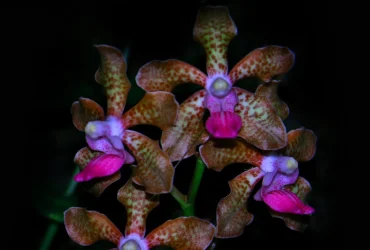 v13i2.345
v13i2.345ISSN: 1800-427X (printed)
eISSN: 1800-427X (online)
DOI:10.47605/tapro.v13i2.345
Submitted date: 17 January 2024
Accepted date: 13 August 2024
Published date: 19 December 2024
Pp. 146–147.
Three new records of butterflies from Madhabkundo Eco-Park in Bangladesh
T. Akhter*, M.A. Rahim, N. Tabassum & S. Hasan
*Corresponding author. E-mail: taniaaktar733@gmail.com
Butterflies belonging to the order Lepidoptera are widely distributed throughout the world. A recent systematic review documented 421 species of butterflies from Bangladesh. This study presents the first records of silver royal, Ancema blanka (de Niceville, 1894); common Faun, Faunis canens (Hübner, 1826); and the rediscovery of grey baron, Euthalia anosia (Moore, 1858) from Bangladesh after 137 years in Madhabkunda Eco Park (MEP; 24o38'25"N, 92o13'06"E), Moulvibazar District, northeastern Bangladesh.
Section Editor: Ángel L. Viloria
eISSN: 1800-427X (online)
DOI:10.47605/tapro.v13i2.345
Submitted date: 17 January 2024
Accepted date: 13 August 2024
Published date: 19 December 2024
Pp. 146–147.
Three new records of butterflies from Madhabkundo Eco-Park in Bangladesh
T. Akhter*, M.A. Rahim, N. Tabassum & S. Hasan
*Corresponding author. E-mail: taniaaktar733@gmail.com
Butterflies belonging to the order Lepidoptera are widely distributed throughout the world. A recent systematic review documented 421 species of butterflies from Bangladesh. This study presents the first records of silver royal, Ancema blanka (de Niceville, 1894); common Faun, Faunis canens (Hübner, 1826); and the rediscovery of grey baron, Euthalia anosia (Moore, 1858) from Bangladesh after 137 years in Madhabkunda Eco Park (MEP; 24o38'25"N, 92o13'06"E), Moulvibazar District, northeastern Bangladesh.
Section Editor: Ángel L. Viloria
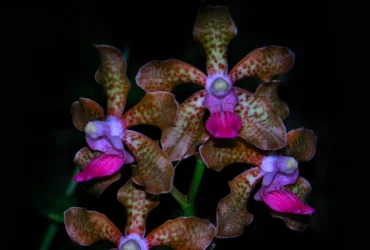 v13i2.344
v13i2.344ISSN: 1800-427X (printed)
eISSN: 1800-427X (online)
DOI:10.47605/tapro.v13i2.344
Submitted date: 29 April 2023
Accepted date: 13 August 2024
Published date: 19 December 2024
Pp. 144–145.
Recent observations on the hairy-nosed otter (Lutra sumatrana) in South Sumatra
N.L. Winarni*, Janjiyanto, A.A. Dwiyahreni, R. Rizqullah, S. Alam, M. Haris, L. Darmawan, S. Lesmana, N.A. Saputro, Y. Rosalina, R. Wandri, D. Asmono & J. Supriatna
*Corresponding author. E-mail: nwinarni@gmail.com
The hairy-nosed otter (Lutra sumatrana) is an endangered species of the family Mustelidae. It is a medium-sized otter with a distinct pale chin and upper lip and was once believed to be extinct in the wild. However, to date, only a few specimen measurements have been published. In Sumatra, two reported sightings were from Sekayu, Palembang, and Bukit Barisan Selatan National Park. Another evident sighting from Palembang was a road kill. Here we report a few sightings from South Sumatra.
Section Editor: Reza Lubis
eISSN: 1800-427X (online)
DOI:10.47605/tapro.v13i2.344
Submitted date: 29 April 2023
Accepted date: 13 August 2024
Published date: 19 December 2024
Pp. 144–145.
Recent observations on the hairy-nosed otter (Lutra sumatrana) in South Sumatra
N.L. Winarni*, Janjiyanto, A.A. Dwiyahreni, R. Rizqullah, S. Alam, M. Haris, L. Darmawan, S. Lesmana, N.A. Saputro, Y. Rosalina, R. Wandri, D. Asmono & J. Supriatna
*Corresponding author. E-mail: nwinarni@gmail.com
The hairy-nosed otter (Lutra sumatrana) is an endangered species of the family Mustelidae. It is a medium-sized otter with a distinct pale chin and upper lip and was once believed to be extinct in the wild. However, to date, only a few specimen measurements have been published. In Sumatra, two reported sightings were from Sekayu, Palembang, and Bukit Barisan Selatan National Park. Another evident sighting from Palembang was a road kill. Here we report a few sightings from South Sumatra.
Section Editor: Reza Lubis
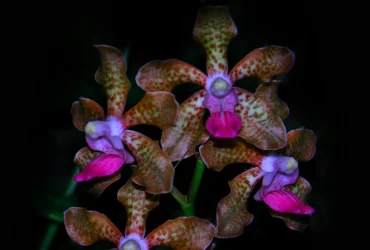 v13i2.343
v13i2.343ISSN: 1800-427X (printed)
eISSN: 1800-427X (online)
DOI:10.47605/tapro.v13i2.343
Submitted date: 11 July 2023
Accepted date: 10 July 2024
Published date: 14 December 2024
Pp. 142–143.
Range expansion of clouded silverline butterfly (Cigaritis nubilus) in Sri Lanka
P.K. Dissanayake, H.H.C.U. Herath, K.G.S.N. Vajirasena, D.M.N.P. Daundasekara & B.C. Wijamunige
*Corresponding author. E-mail: kapila@agri.sab.ac.lk
Clouded Silverline, Cigaritis nubilus (Moore, 1887) is a small butterfly belonging to the family Lycaenidae and is endemic to Sri Lanka. It has wings with a brick-red background on the underside of the wings. There are silvery and dark red lines across the undersides of both wings. The upper side of the hind wings is dark, bright blue in males, whereas in females it is greyish. It is considered a rare butterfly, as it has historically been recorded only in a few places in the dry northern part of Sri Lanka.
Section Editor: Konrad Fiedler
eISSN: 1800-427X (online)
DOI:10.47605/tapro.v13i2.343
Submitted date: 11 July 2023
Accepted date: 10 July 2024
Published date: 14 December 2024
Pp. 142–143.
Range expansion of clouded silverline butterfly (Cigaritis nubilus) in Sri Lanka
P.K. Dissanayake, H.H.C.U. Herath, K.G.S.N. Vajirasena, D.M.N.P. Daundasekara & B.C. Wijamunige
*Corresponding author. E-mail: kapila@agri.sab.ac.lk
Clouded Silverline, Cigaritis nubilus (Moore, 1887) is a small butterfly belonging to the family Lycaenidae and is endemic to Sri Lanka. It has wings with a brick-red background on the underside of the wings. There are silvery and dark red lines across the undersides of both wings. The upper side of the hind wings is dark, bright blue in males, whereas in females it is greyish. It is considered a rare butterfly, as it has historically been recorded only in a few places in the dry northern part of Sri Lanka.
Section Editor: Konrad Fiedler
Hubungi Kami
The ultimate aim of the journal is to provide an effective medium for communication of the latest and best scientific information.
Copyright © 2020 Taprobanica. All Rights Reserved
Jasa Pembuatan Website by IKT




